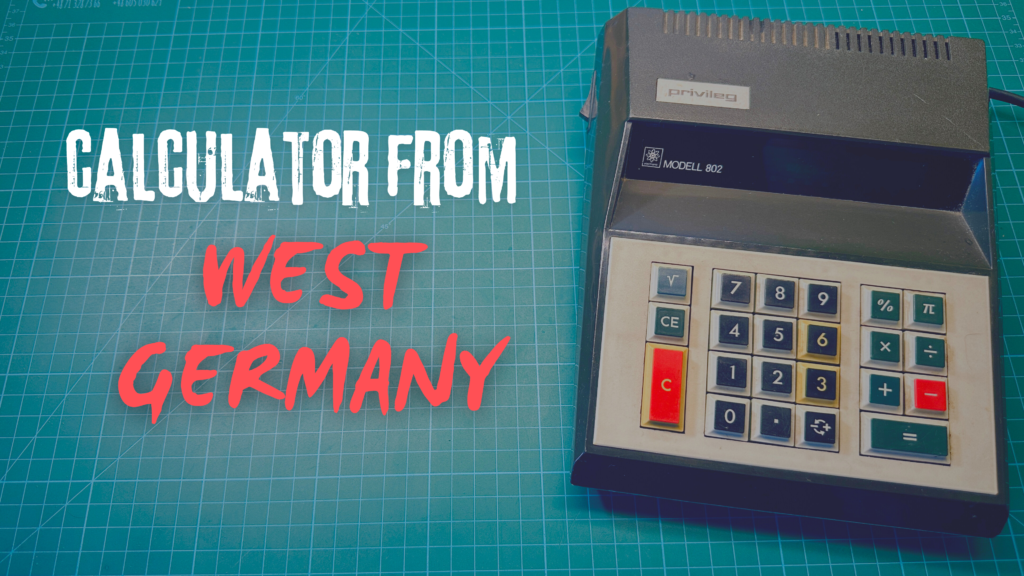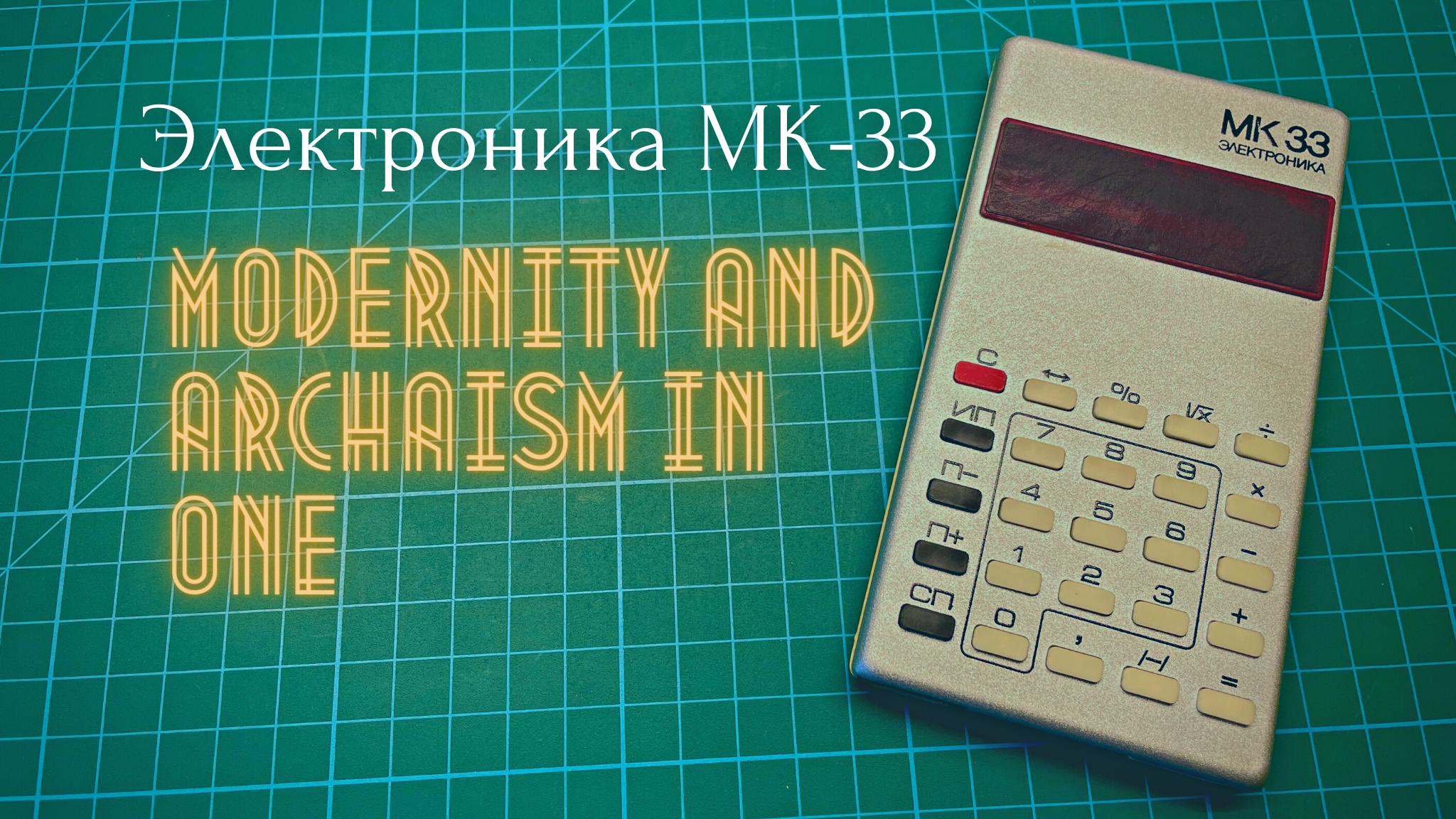During the communist era, the dream of many people was to own electronic equipment from the West. Acquiring the coveted computer equipment was downright impossible, but equipment such as calculators and audio systems were somehow obtainable. Today we will take a closer look at one such design. The Privileg Modell 802, as it is referred to, is an 8-digit desktop calculator produced since 1982. It is worth mentioning that there was also a calculator with an almost identical name Privileg 802, but this is a completely different pocket-sized design.
Privileg, however, is not actually a calculator company, it is a brand of home appliances owned by the Quelle mail-order company. Quelle was a small family business founded in 1927 by Gustav Schickedanz. Initially, it was engaged in the production of textiles, but this soon changed and one of the undesirable pages of history is associated with this company.

A few years after the company’s founding, in November 1932, Schickedanz joined the NSDAP, and shortly thereafter sat on the council of his hometown of Fürth. From the moment he joined the party, Quelle’s business began to grow rapidly, unfortunately, all at the expense of the Jewish owners of the companies often taken over for nothing by Quelle.
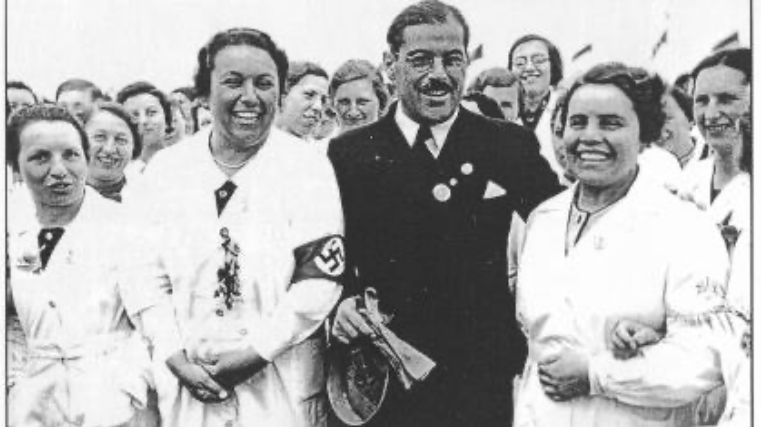
As is not hard to guess, the takeovers of Jewish companies took place without the consent of their owners in a process known as Aryanization. According to historians, “The head of Quelle was not a staunch party soldier,” but behaved “prudently, opportunistically” and completely in line with those in power. After World War II, it came to light that of the company’s capital of 9 million German marks, as much as 7 million came from Jewish property looted during the war. In 1945, Schickedanz’s assets were confiscated and he was jailed, but only for three years. After that, his sentence was commuted to a fine of 2,000 marks. The reasons for his acquittal are quite unclear. Here we are entering the rather slippery ground of the situation in post-war Germany. One can refer here to Gregor Schöllgen author of the biography Schickedanz. He mentions that people like the head of Quelle were needed after the war, they were supposed to rebuild West Germany. In addition, there was a sizable group of people from Schickedanz’s background who demanded his acquittal. It should be mentioned, however, that after the sentence was changed and the property was recovered, Schickedanz paid many reparations and transferred a large part of the property to its rightful owners, although he remained historically burdened by his actions during the Nazi era until the end of his life.
After the turbulent times of World War II, Quelle films are booming. The Privileg brand itself is established in 1964 and household appliances as well as office machines are sold under its logo. However, after Schickedanz’s death in 1974, Quelle’s importance begins to decline. And finally in 2009. Quelle declares bankruptcy. The Privileg brand is previously sold to the Otto Group, which then sells it to the American Whirlpool Corporationpool. The Americans continue to sell home appliances under the Privileg logo to this day.
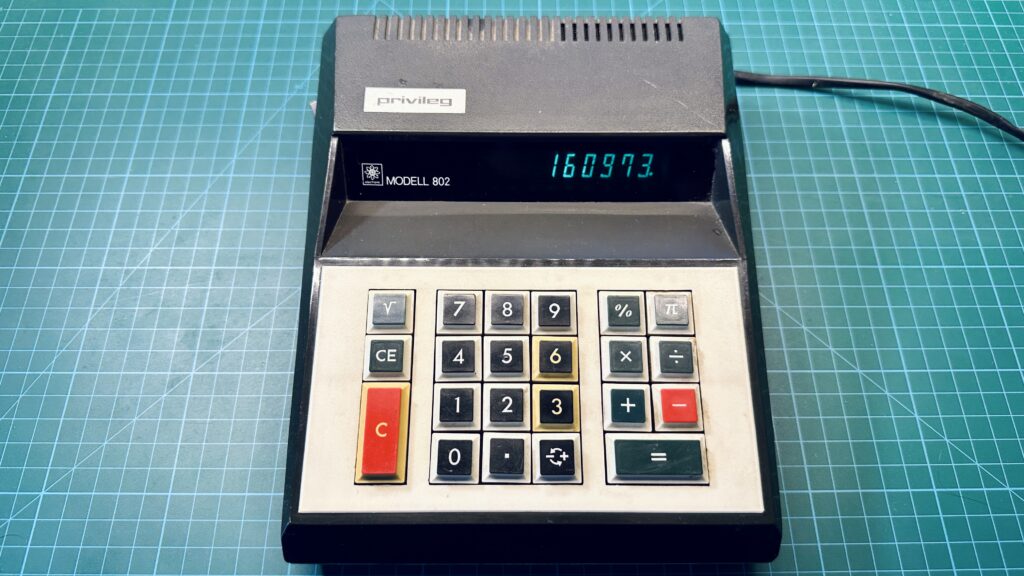
But let’s get back to today’s hero. The case of the Privileg Modell 802 calculator is made of plastic and consists of two parts – the upper one is black, while the lower one is white. The cover around the keyboard is also white in color. The display was placed at the right edge under a semi-transparent green cover. On its left side was the model designation, and above it the Privileg inscription. The buttons on this calculator were located in the central part in three groups of 3, 12 and 7 keys each, respectively. The buttons themselves come in three colors, and the function markings are an integral part of them, so there is no possibility of them getting old. It must be said that for its age this keyboard works superbly. The stroke of the keys is quite large, but they are precise, just everything works as it should.
This calculator is one of the basic models and supports only a few mathematical functions, and has no memory, although it could, since the chip on which the design is based supports it. However, it is worth noting that the calculator is equipped with a dedicated key for the number π .
The design is powered by mains voltage, but the cable is unfortunately not detachable. The switch for turning on the calculator is located on the left edge. Unfortunately, my copy does not have a nameplate.
The inside of a calculator from West Germany
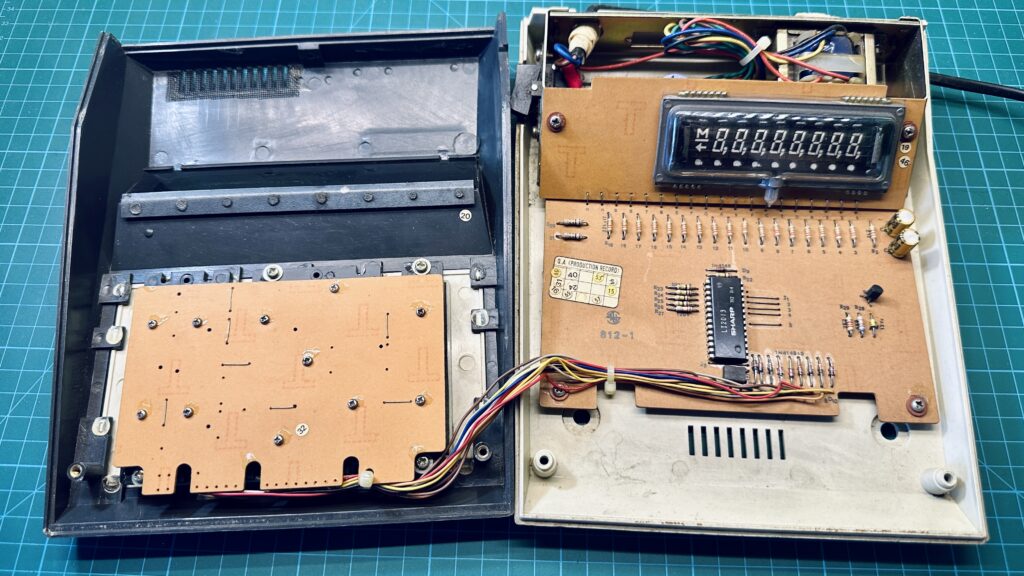
After removing three screws – two underneath and one on the back edge – you can disassemble the calculator and look inside. In the upper part of the case there is only the keyboard board connected by a wiring harness to the motherboard. An interesting element here is also two metal threads sunk in plastic pillars, it is into these that the screws holding the two parts of the case are screwed. Such a solution deserves most praise, thanks to it the durability of the structure is much longer than in the case of using an ordinary plastic thread. In the lower part of the case the motherboard was placed, which housed the power section, the main processor and the accompanying passive components. The display itself was soldered to a separate board connected to the main circuit by metal jumpers. Here, too, one can note a praiseworthy procedure, namely that all the screws holding the main board and the display circuit were treated with glue, which still holds today.
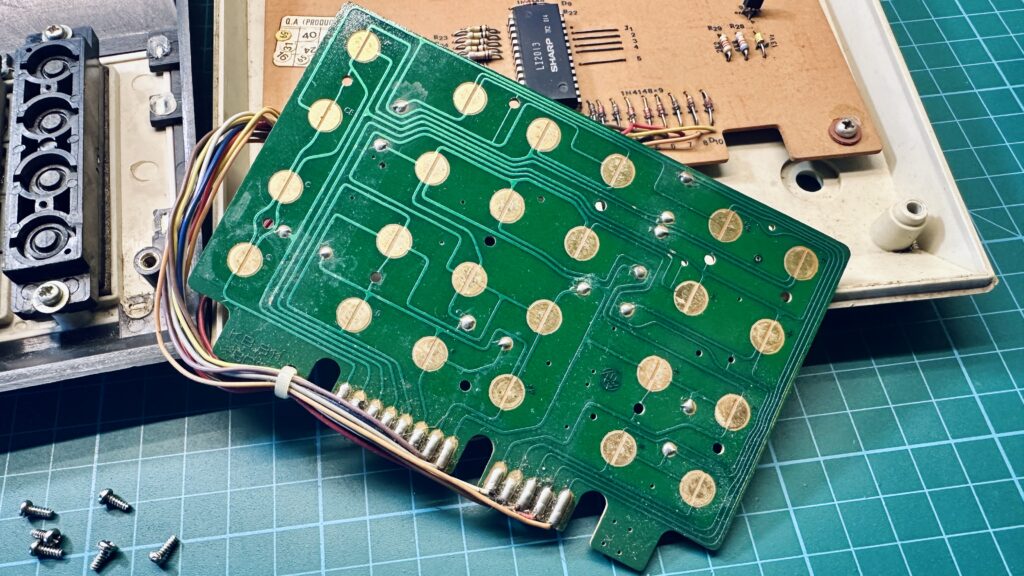
After unscrewing the keyboard board, you can see its more detailed design. It is a classic design, in which two fields are shorted by a button, thus creating a pulse that goes to the main processor.
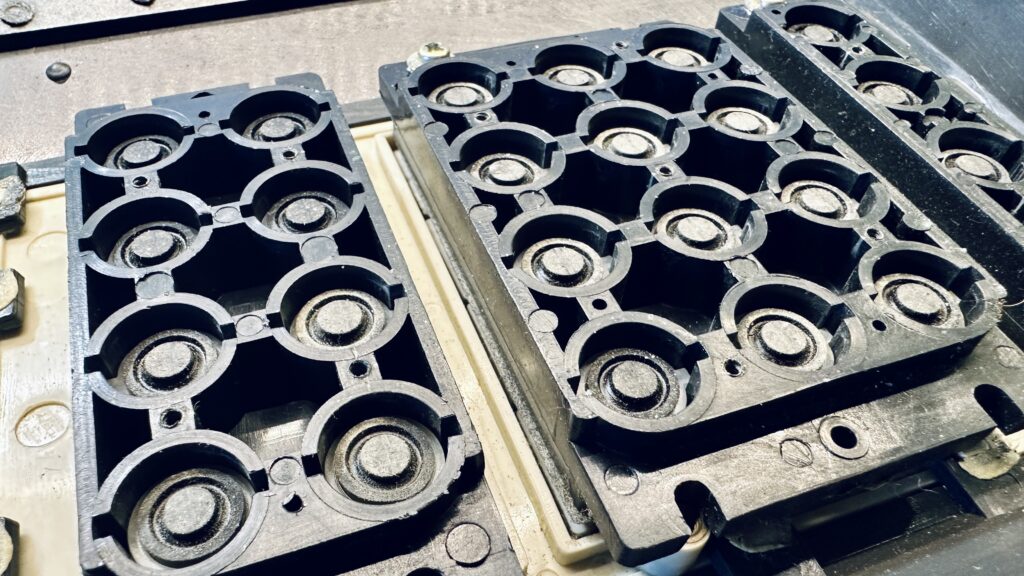
The mating of the fields on the keyboard board is made possible by a rubber design that is most likely coated with graphite.
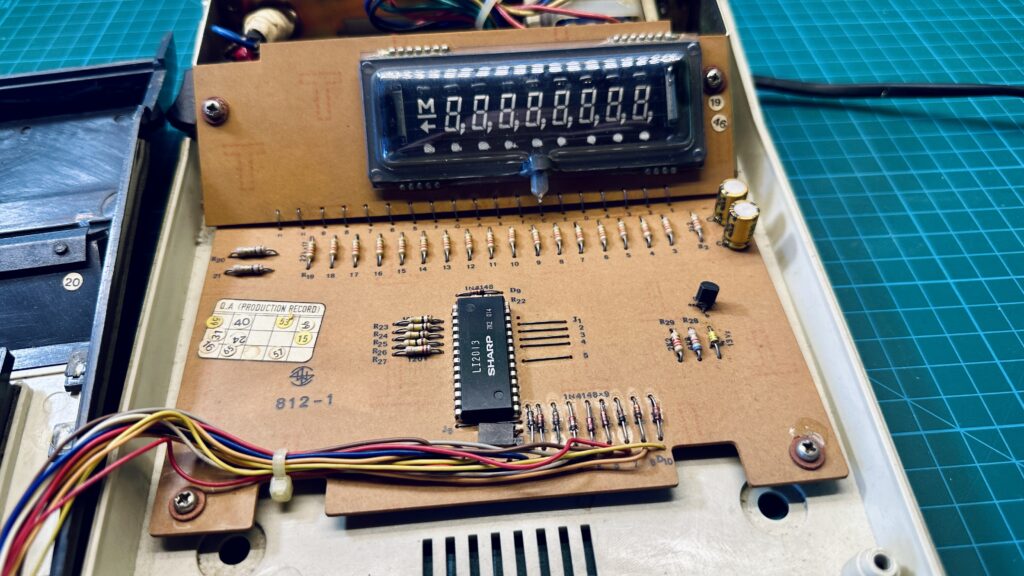
However, let’s turn to the other side. We have to admit that the motherboard is quite neat, with the CPU placed in the central part, the resistors controlling the signal lines of the display were placed above, while the wires from the keyboard were soldered at the bottom edge, along with nine semiconductor diodes. A single transistor was placed on the right side, along with two resistors and a single 13V zener diode. At the left edge was a rather mysterious sticker.
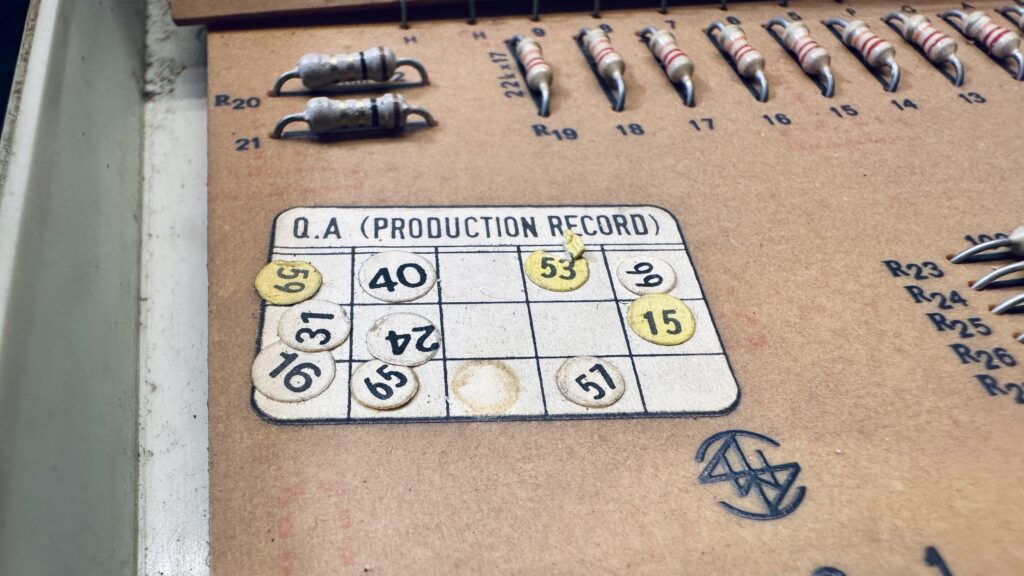
The meaning of the sticker is unfortunately unknown to me. I can only suspect that the round stickers were placed at each quality control during the production process.
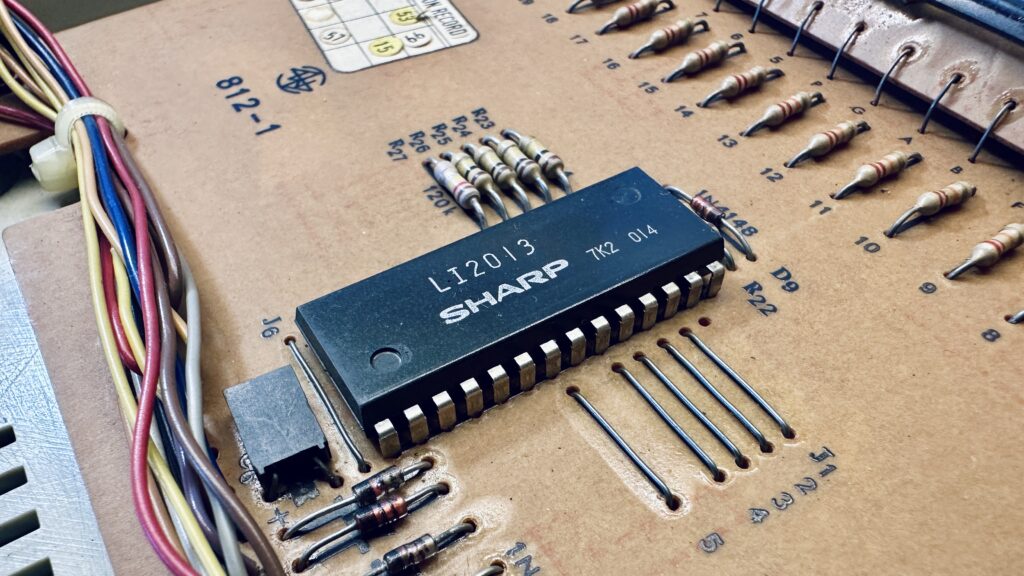
Let’s take a slightly closer look at the main processor. This is SHARP’s design, designated LI2013, which is one of the many representatives of calculator-on-chip circuits. It is powered by three voltages, so there is no need for an amplification stage for the VFD display. Interestingly, the Privileg Modell 802 does not use this chip 100 percent. As I mentioned earlier, the calculator does not have a memory, and it could, since SHARP’s chip offers this capability. However, since this calculator was a lower-end model, its functions were limited. Only the Privileg Modell 812M, using the same chip, used all its capabilities. Another curiosity may be the fact that the LI2013 could support, as many as 36-key keyboard, of which 9 of them would not have, any function anyway. The only calculators using the full potential of the SHARP chip were the Imperial 1020 and, most likely, the Royal 1020, although I am not sure about it.
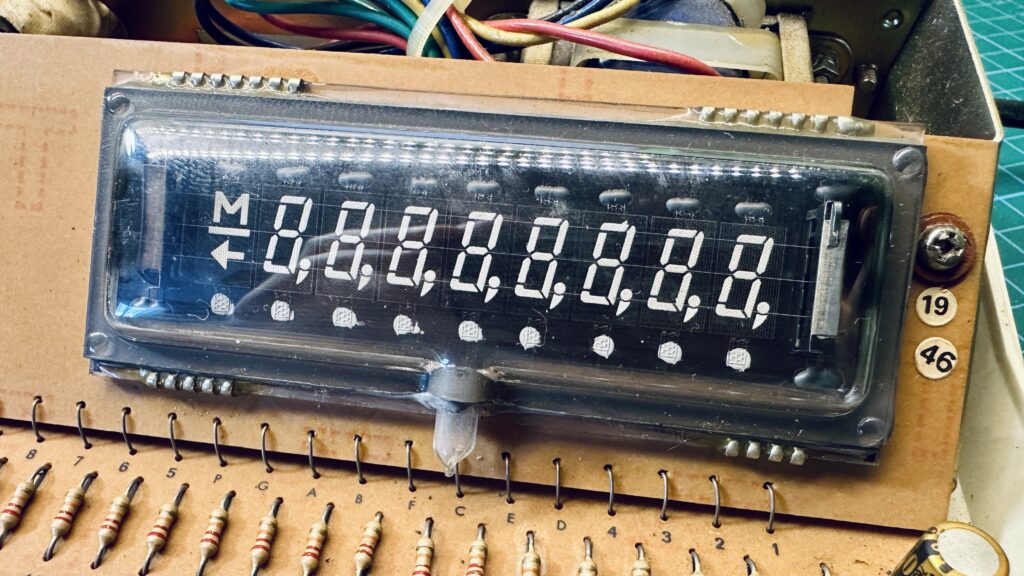
The display in today’s featured calculator is an eight-digit VFD, with a single field for special characters. This component was manufactured by the Japanese company ITRON and bears the designation FG99A2. This display was also used in Privileg 801, 811M and 812M calculators.
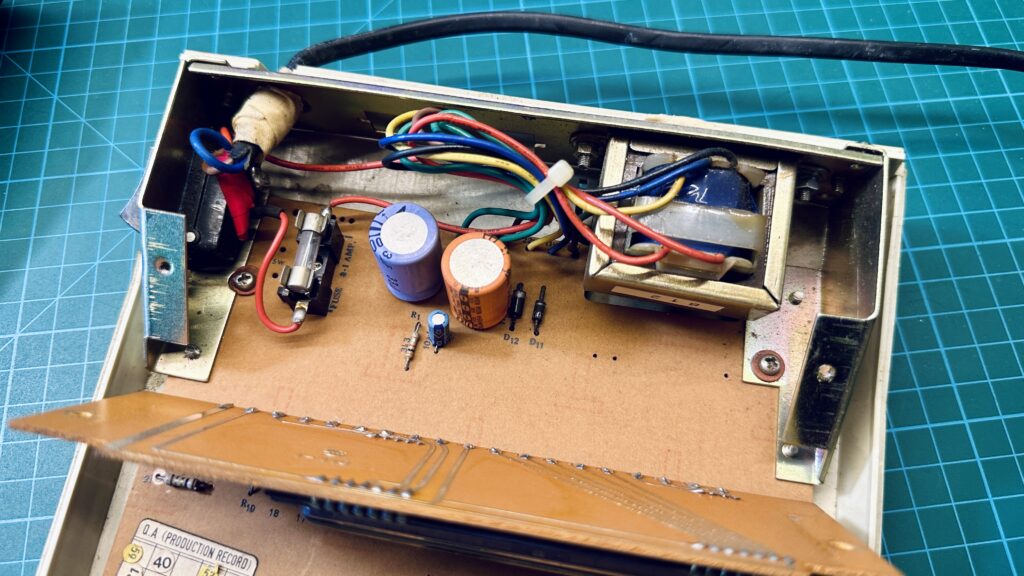
Behind the display board was placed the power supply section, it is very simple and consists of a transformer, rectifier bridge and RC filters. In addition, there was also a fuse. Taking a closer look at the place where the power cable is placed, one can tell that someone has been here before. Evidently, it can be seen that this wire was once replaced. On the left side, on the metal body surrounding the power section, there is still a button that activates the device.
Where did the Privileg Model 802 really come from?
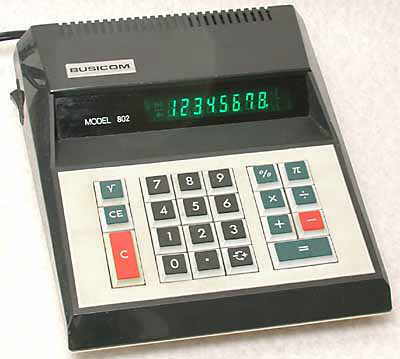
In the photo above you can see the Busicom 802 calculator, similar or not. Basically you have to say the same, exactly the same, the only difference is the logo plate. Well, in fact, the Privileg Modell 802 calculator was not a German design, it was a copy of the Japanese Busicom 802. However, a fully legal copy, because Quell did not even assemble calculators in Europe, but bought ready-made devices from the Japanese, with an altered logo. It can be suspected that Privileg calculators, as well as Busicom calculators, were leaving the same factory.
